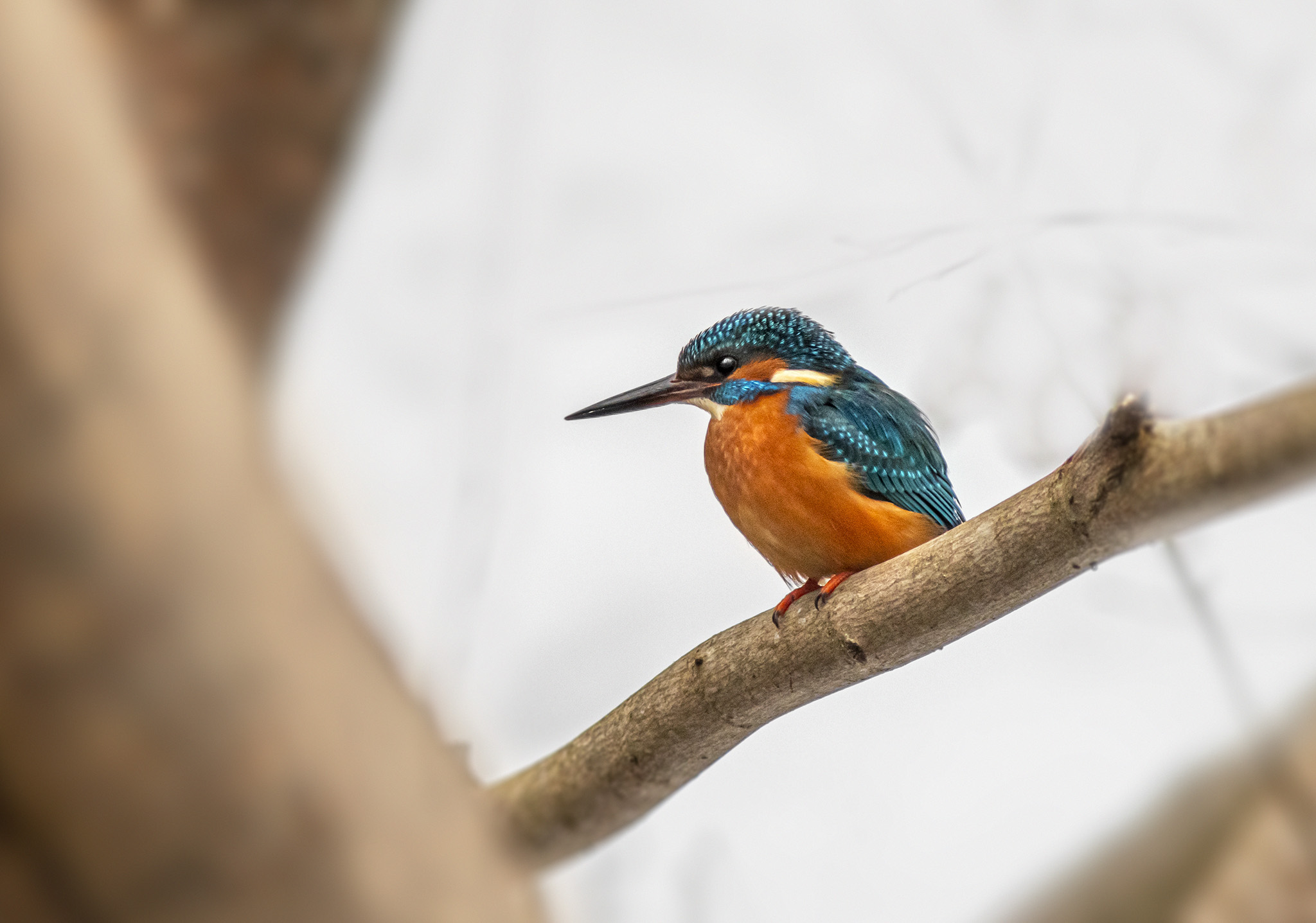Here’s a detailed natural history overview of the Common Kingfisher (Alcedo atthis), one of Europe’s most dazzling and easily recognizable river birds:
Common Kingfisher (Alcedo atthis)
Taxonomy & Classification
- Kingdom: Animalia
- Phylum: Chordata
- Class: Aves
- Order: Coraciiformes
- Family: Alcedinidae (kingfishers)
- Genus: Alcedo
- Species: A. atthis
General Description
- Size: 16–17 cm in length; wingspan 24–26 cm.
- Weight: 34–46 g.
- Plumage:
- Upperparts: Brilliant metallic blue to turquoise.
- Underparts: Rich orange-chestnut.
- Throat and neck: White patches.
- Bill: Long, straight, dagger-like; black in males, lower mandible partly orange in females.
- Sexual dimorphism: Subtle — females have an orange-red base on the lower bill, while males’ bills are all dark.
- Flight: Rapid, straight, and low over water, with fast wingbeats.
Behavior & Lifestyle
- Solitary and territorial: Fiercely defends stretches of riverbank or pond against intruders.
- Foraging technique:
- Hunts by perching silently above water, then plunging headfirst to catch fish.
- Uses sharp eyesight to detect prey, compensating for water refraction.
- Resting & perching: Frequently uses overhanging branches, reeds, or posts as vantage points.
- Call: High-pitched, sharp “tsreee” whistle, often heard before the bird is seen.
Diet
- Primary food: Small fish (minnows, sticklebacks, gudgeon).
- Other prey: Aquatic insects, crustaceans, tadpoles.
- Feeding behavior: Beats captured prey against a perch before swallowing headfirst.
Reproduction & Life Cycle
- Breeding season: April–August (varies by region).
- Nest: Excavated tunnel in a sandy riverbank, 60–90 cm long, ending in a nesting chamber.
- Clutch size: 5–7 glossy white eggs.
- Incubation: 19–21 days, shared by both parents.
- Fledging: Young leave nest at ~23–27 days, but may still be fed for another week.
- Multiple broods: Often 2–3 broods per year if conditions are favorable.
Habitat
- Clear, slow-flowing or still freshwater bodies with abundant small fish and steep earth banks.
- Rivers, streams, lakes, canals, gravel pits, and estuaries.
Geographic Range
- Found across Europe, North Africa, and much of Asia.
- Resident in milder regions, but northern populations migrate south in winter when water bodies freeze.
Ecological Role
- Predator: Regulates populations of small fish and aquatic insects.
- Indicator species: Highly sensitive to water quality — declines in numbers often signal pollution or habitat degradation.
- Prey: Eggs, chicks, and adults may fall victim to herons, snakes, cats, and birds of prey.
Special Adaptations
- Vision:
- Excellent binocular vision for precise underwater targeting.
- Protective nictitating membrane acts as underwater goggles.
- Streamlined body: Adapted for rapid dives into water.
- Specialized bill: Long and pointed for spearing or grasping slippery fish.
Conservation Status
- IUCN Red List: Least Concern globally, though populations are fragmented.
- Population trend: Declines in some areas due to water pollution, river modification, and harsh winters.
- Threats:
- Loss of clean, fish-rich waterways.
- Nest destruction by flooding or riverbank erosion.
- Human disturbance and collisions with windows.
- Conservation measures:
- Protecting rivers and wetlands.
- Improving water quality.
- Creating artificial nesting banks where natural ones are lacking.
Interesting Facts
- Known as the “flying jewel” because of its iridescent plumage.
- Can dive at speeds of 40 km/h into water.
- Each bird requires up to 500 g of fish per day — often more than its own body weight.
- One of the few bird species that can hover briefly before diving.
- In mythology and folklore, kingfishers are often seen as symbols of peace, prosperity, and good fortune.
Visited 887 times, 7 visit(s) today
Views: 1236
Subscribe to the newsletter:
